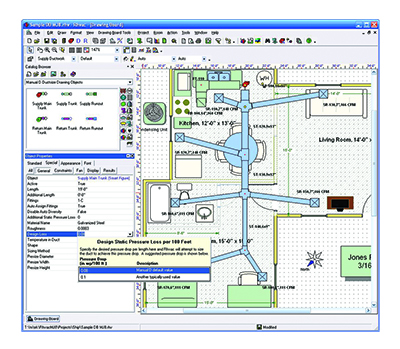For many years contractors have resisted doing proper HVAC load calculations. After all, it is just so fast to apply a square foot per ton figure, like 500 sq.ft./ton, and finish sizing the HVAC equipment in seconds.

You will never be undersized if you use a conservative number like 500 sq.ft./ton. So what if the equipment is oversized a bit? No one really complains unless the equipment is too small, right?
That is the thinking that many HVAC contractors use to this day. Too many contractors view load calculations as time-consuming and unnecessary. Another reason for thinking this is because calculation results sometimes are in reasonable agreement with rule-of-thumb estimates.
However, modern building codes and building materials like spray foam and super low-E windows cause the construction industry to build homes more energy efficient than ever. In some cases, we are talking about 1,500 sq.ft./ton efficiencies. Even for houses not built like refrigerator boxes with few windows, it is still very easy for a new home to calculate to something like 800 sq.ft./ton.

But not all residential structures are the same. Today, homes needing very small HVAC systems frequently happen enough that ACCA has published a manual entitled, “HVAC Design for Low-Load Homes: ACCA Low-Load Home Manual.”
Oversizing Drawbacks
Oversizing HVAC equipment creates several significant drawbacks. One immediate disadvantage is initial equipment cost. Condensing units, air handlers, furnaces, etc. always cost more as they increase in capacity. Your ability to win a project can be easily affected by proposing a system that costs more than a properly sized system. Sizing HVAC equipment using old timers’ rule-of-thumb methods virtually guarantees an oversizing situation.
Another drawback to oversized systems is increased operating costs. An oversized system will short cycle, and there are power inefficiencies from frequently starting and stopping an electric motor.
Click Below for the Next Page













Recent Comments